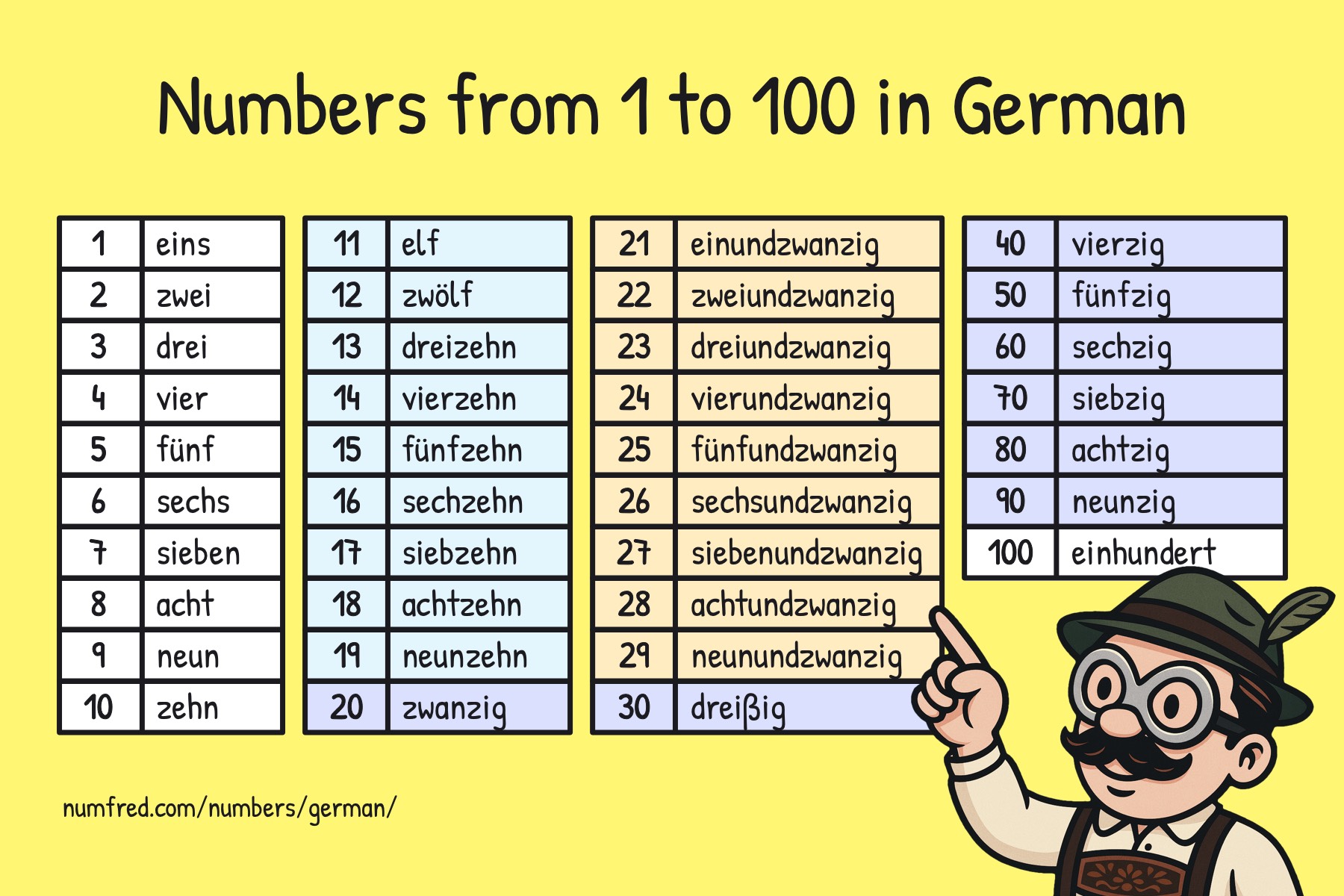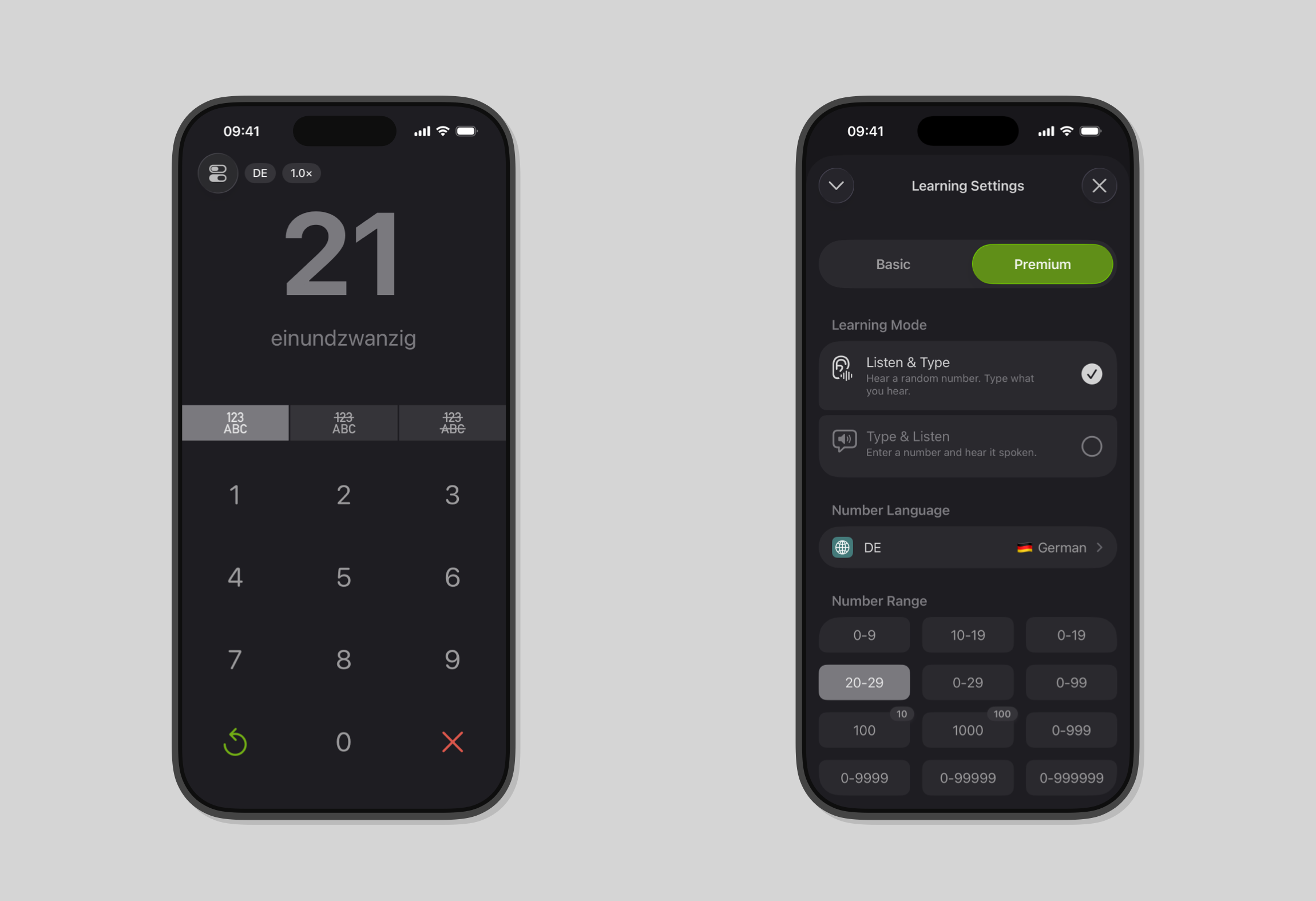
Numfred Blog
Have you ever wondered why Germans say numbers from 21 onwards "backwards"? You're not alone – many learners struggle with this! The reversed order of units and tens is a real challenge for many language learners.
In this article, you'll discover what makes German numbers special, how to avoid common mistakes, and which strategies you can use to specifically train your number recognition skills.
German numbers have a unique feature that distinguishes them from many other languages: From 21 onwards, the units are spoken before the tens. While in English you say "twenty-one" (20-1), in German it's "einundzwanzig" (1-and-20). This reversed order used to exist in many languages – including Old English! However, most languages have abandoned it over time. In German (and Dutch), it has remained. For learners, this means: You need to "reprogram" your brain for this order.
But the German number system presents several hurdles for German learners! Here are the most common problems in practice:
These numbers form the foundation; you should master them confidently:
Tip: Pay special attention to "sechzehn" (not "sechszehn") and "siebzehn" (not "siebenzehn") – letters are dropped in each case!
From 21 onwards, units and tens are combined – but be careful, units first, then "und", then tens:
Important ten numbers:
There's an iPhone app dedicated exclusively to listening comprehension of numbers in foreign languages. With Numfred, you can specifically learn German numbers:

Download the app on the App Store:
Would you like to dive deeper into the topic? Then check out our comprehensive guide to German numbers from 1-100. There you'll find:
Looking for more tips? Visit our Blog for more articles and exercises.
German numbers follow a clear system. Yes, the reversed order might feel strange at first – but with daily listening practice (even 5 minutes a day!), you'll quickly internalize the pattern.
Start today: Try the mini quiz above or use an app like Numfred. The more you listen to and repeat numbers, the easier it becomes.